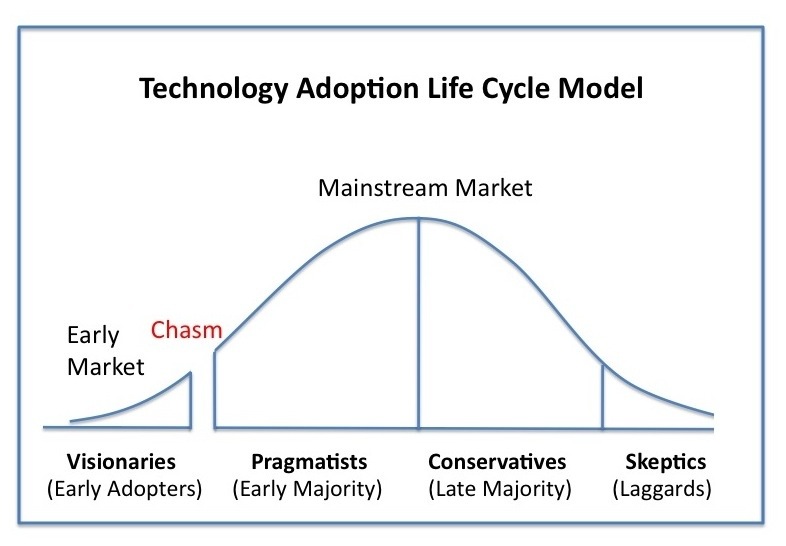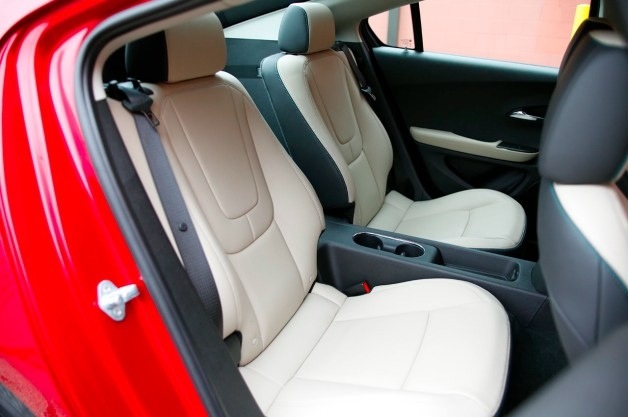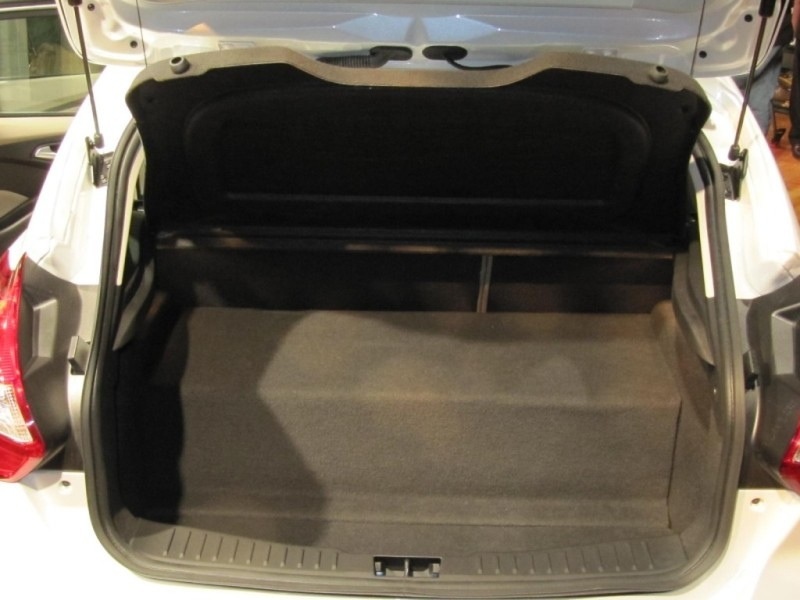Environmentalists and foreign oil hawks alike have gnashed teeth over the apparent slow adoption of electric vehicles (EVs), lamenting that “if only people knew [fill in the blank]”, EV sales would quickly surpass those of conventional fossil fuel-powered cars. EV supporters point to the lack of a national charging network, ignoring the fact that you can plug in – though maybe not to a high-amperage socket – nearly anywhere in the US. Build the infrastructure, they claim, and EV sales will take off. Others point to the general slowdown in auto sales brought on by the Great Recession.
There is a current of truth to all of these explanations, but none tell the whole story. I’d like to offer an additional – and I think fundamental – explanation for why EVs are not yet mainstream.
Let’s start – briefly – with technology adoption theory, as modified by Geoffrey Moore in Crossing the Chasm, as shown below.
His thesis is that Early Adopters have such different psychographic and purchasing behaviors from mainstream buyers that technologies face a significant hurdle in transitioning from early market sales success to mainstream sales success. Among other things, Early Adopters are willing to put up with an incomplete and/or expensive product because they love the possibilities that it presents.
This is exactly what is happening in the EV market today. Most EVs carry a price premium (though I don’t subscribe to the theory of comparing them directly to gasoline-powered counterparts; otherwise, how to account for people purchasing a Mercedes Benz over a Hyundai?), and most of them have limited range before recharging. Additionally, most EVs have at least one glaring flaw – in addition to the price and range issues – compared to their gasoline-powered competitors:
- Chevy Volt only seats 4 due to battery pack intrusion into the back seat.
- Ford Focus EV has severely limited cargo capacity due to battery pack intrusion.
- Nissan Leaf has faced widely-publicized issues with battery pack degradation.
- Fisker Karma has been plagued by a multitude of reliability issues.
All of these cars are incredible technological achievements, and most of them would serve an average driver quite capably. But compared to other vehicle options, they are clearly incomplete products. The challenge for automakers, then, is to successfully “cross the chasm” and bring to market EVs that develop the technological prowess they’ve demonstrated with existing EVs into a non-compromised product. Then, and only then, will EV adoption take off.





Leave a Reply